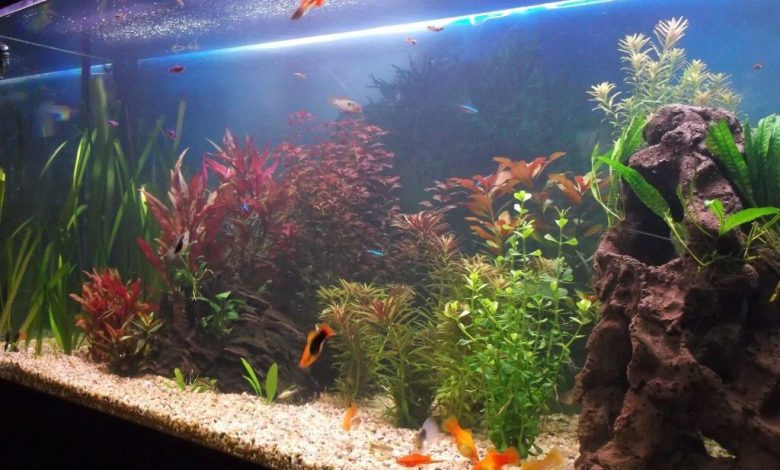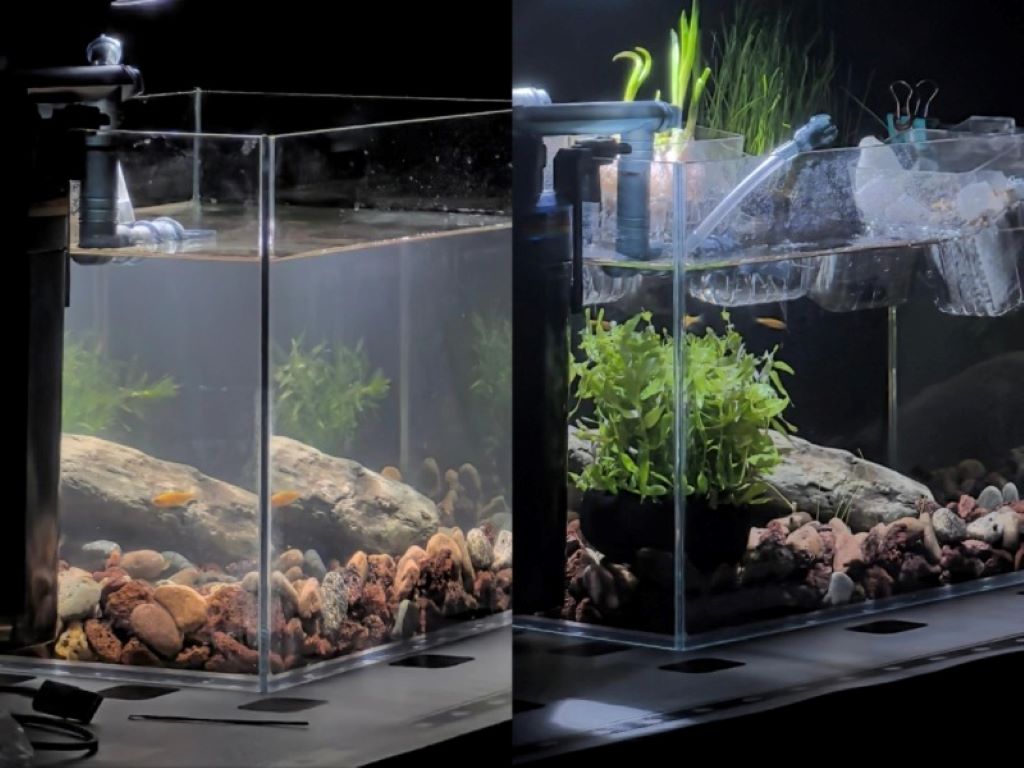bacterial bloom in home aquariums

You wake up one morning, ready to enjoy your beautiful home aquarium, only to find a milky, white cloud has taken over. Your crystal-clear water is gone, replaced by a fog that obscures your fish and plants. This alarming sight is a classic case of a bacterial bloom. It is one of the most common issues new and even experienced aquarists face. While it can be stressful, it is almost always fixable. For hobbyists of all levels, especially those maintaining complex systems, resources like the Reef Aquarium Blog provide invaluable guidance on water quality. This article will guide you through understanding exactly what a bacterial bloom is, why it happens, and how you can restore your tank to its clear, healthy state.
What is a Bacterial Bloom?
So, what is this white cloud in your tank? It is not, as many first assume, an algae bloom. Algae blooms typically turn the water green (phytoplankton) or grow on surfaces. This milky white or grayish haze is, quite literally, a population explosion of free-floating bacteria.
These are specifically known as heterotrophic bacteria. Unlike the beneficial nitrifying bacteria in your filter that consume ammonia and nitrite, heterotrophic bacteria feed on a different food source: dissolved organic compounds (DOCs). These compounds are the waste products of aquarium life. They include fish waste, uneaten food, and decaying plant matter. When there is a sudden, massive surplus of this “food,” the heterotrophic bacteria population explodes to consume it. Many new aquarists are alarmed by this, but understanding the root cause of a bacterial bloom is the first step to clearing the water. In short, the cloudiness you see is not the problem itself; it is a symptom of an underlying nutrient imbalance in your aquarium.
The Main Causes of a Bacterial Bloom
A bacterial bloom does not happen for no reason. It is always a direct response to an excess of nutrients. To solve the problem, you must first identify the cause. Here are the most common reasons your aquarium might be experiencing a bacterial bloom.
The “New Tank Syndrome” Bloom
This is the most frequent cause for new hobbyists. When you first set up an aquarium, it is a sterile environment. The beneficial nitrifying bacteria (the “good guys”) have not had time to grow and establish themselves in the filter. This process is called “cycling” the tank.
Often, a new aquarist adds fish too soon or adds a source of ammonia (like fish food) to start the cycle. This creates a food source. Before the nitrifying bacteria can take hold, the fast-multiplying heterotrophic bacteria (the “cloudy guys”) detect the organic waste and reproduce rapidly. This new tank bloom is a normal, though unsightly, part of the cycling process.
Overfeeding Your Fish
This is the number one cause of bacterial blooms in established, mature aquariums. Every flake, pellet, or frozen cube that is not eaten by your fish breaks down. It settles on the substrate or gets pulled into the filter, where it decays.
This decaying food is a massive feast for heterotrophic bacteria. If you consistently feed your fish more than they can consume in one or two minutes, you are directly fueling a bacterial bloom. The bacteria multiply to match the available food source, and the water turns cloudy.
Adding Too Many Fish at Once (Overstocking)
Your aquarium’s biological filter (the colony of beneficial nitrifying bacteria) is a living ecosystem. It grows to a size that can handle the current bioload, which is the amount of waste produced by your fish.
If you add several new fish to an established tank at the same time, the bioload increases dramatically. Your existing filter bacteria cannot keep up with the sudden spike in ammonia and organic waste. This surplus of waste becomes food for a bacterial bloom. Therefore, it is always recommended to stock a new tank slowly, adding only a few fish at a time over several weeks.

Decaying Organic Matter
Sometimes, the source of the nutrient spike is hidden. The bloom might be caused by something decaying in the tank that you have not noticed. This could include:
- A dead fish or snail that has fallen behind a rock or decoration.
- A large aquatic plant that has died and is melting away.
- A hidden pile of uneaten food decomposing in a corner.
- A deep sand bed that was disturbed, releasing a pocket of trapped waste and gas.
Any sudden introduction of a large amount of decaying organic material can trigger a massive and rapid bacterial bloom.
Large Filter “Cleaning” or Maintenance
This is a critical mistake many aquarists make. Your filter media (sponges, ceramic rings, bio-balls) is the primary home for your beneficial nitrifying bacteria. These bacteria are the engine of your aquarium, keeping toxic ammonia and nitrite at zero.
If you “clean” this filter media by rinsing it under tap water, the chlorine and chloramine in the tap water will kill your beneficial bacteria. This effectively “crashes” your aquarium’s cycle. When the good bacteria die off, two things happen. First, toxic ammonia levels will rise. Second, the fast-growing heterotrophic bacteria take advantage of the imbalance, leading to a severe bacterial bloom. You should only ever rinse filter media in water siphoned from the aquarium itself (tank water) to preserve the bacterial colony.
Is a Bacterial Bloom Dangerous to My Fish?
This is the most pressing question for any aquarist watching their fish swim through a white fog. The answer is both no and yes.
The bacteria themselves are generally not harmful. They are not parasites and do not directly attack your fish. However, the effect of such a massive bacterial population can be extremely dangerous.
The real danger is oxygen depletion. Bacteria, just like fish, consume oxygen through respiration. When you have billions of bacteria multiplying in the water, they consume a massive amount of dissolved oxygen. This can quickly lead to a situation where there is not enough oxygen left for your fish.
You may notice your fish gasping for air at the water’s surface, especially in the early morning (as oxygen levels naturally drop overnight). This is a sign of severe respiratory distress. Therefore, while the bacteria are not toxic, the bloom can lead to the suffocation of your fish.
How to Fix a Bacterial Bloom
Your course of action depends on whether your tank is new or established.
For New, Cycling Tanks
If your tank is less than a few weeks old and you are in the middle of the cycling process, the best course of action is often to do nothing. This bloom is a natural part of the process. The bacteria are consuming the excess organics. Once this food source is gone, the bacterial population will crash on its own, and the water will clear.
However, you must still protect any fish that are in the tank. Add an airstone or increase the surface agitation from your filter’s output. This will help to oxygenate the water and prevent your fish from suffocating. Do not perform large water changes, as this can interrupt the nitrogen cycle you are trying to establish. Patience is key.
For Established Tanks
If your tank has been running for months or years and a bloom suddenly appears, you must take active steps.
- Stop Feeding: Immediately stop feeding your fish for two to three days. This cuts off the primary food source (uneaten food) for the bacteria. Your fish will be perfectly fine without food for this short period.
- Perform a Water Change: Do a 25-30% water change. This helps to physically remove some of the free-floating bacteria. More importantly, it dilutes the dissolved organic compounds (the bacteria’s food) in the water.
- Clean the Substrate: Use a gravel vacuum or siphon to thoroughly clean the top layer of your substrate. This will remove the decaying food and fish waste that is fueling the bloom.
- Check Your Filter: Gently check your filter. Do not clean it with tap water. If the filter pads or sponges are severely clogged, rinse them gently in the bucket of tank water you just siphoned out.
- Increase Oxygen: Just as with a new tank, add an airstone or point your filter output at the surface. This is a critical step to protect your fish from oxygen depletion while the bloom is active.
- Find the Source: Look for any dead fish, snails, or rotting plants and remove them immediately.
Using Equipment to Help
While not a substitute for fixing the root cause, some equipment can help clear the water faster.
- UV Sterilizer: A UV sterilizer works by pumping aquarium water past an ultraviolet light. This light kills any free-floating organisms, including bacteria and algae. A UV sterilizer is highly effective at clearing a bacterial bloom, often within 24-48 hours.
- Protein Skimmer: This device is standard in saltwater and reef aquariums. It actively removes dissolved organic compounds (DOCs) before they can feed the bacteria. Running a protein skimmer can help clear a bloom and prevent future ones.
- Filter Floss: Adding a fine pad of filter floss or a polishing pad to your filter can help trap the free-floating bacteria, physically removing them from the water. However, this pad must be changed every 24 hours, or it will clog and the trapped bacteria will die and decay, making the problem worse.
How to Prevent Future Bacterial Blooms
Once your water is clear, the goal is to keep it that way. Prevention is all about good, consistent aquarium husbandry.
- Feed Responsibly: This is the most important rule. Only feed your fish what they can completely consume in 1-2 minutes, once or twice a day.
- Regular Maintenance: Perform regular, consistent water changes (e.g., 25% every 1-2 weeks). This removes and dilutes the organic waste before it can build up.
- Clean Your Substrate: Use a gravel vacuum during every water change to remove waste from the substrate.
- Stock Slowly: When adding new fish, only add one or two at a time. Give your biological filter at least two weeks to adjust to the new bioload before adding more.
- Protect Your Filter: Never wash your filter media in tap water. Never replace all your filter media at once. Only rinse it in tank water when it becomes clogged.
Conclusion
A bacterial bloom in your home aquarium can be a frightening sight, but it is rarely a catastrophe. Instead, it is a clear signal from your tank that something is out of balance. In new tanks, it is often a normal part of the cycling process. In established tanks, it is almost always a sign of excess nutrients, usually from overfeeding or a sudden introduction of waste.
By identifying the cause, taking steps to reduce the nutrient load, and ensuring your fish have plenty of oxygen, you can navigate the bloom safely. Remember that patience and good, consistent maintenance are the ultimate keys to a stable, healthy, and crystal-clear aquarium.
Frequently Asked Questions (FAQs)
-
How long does a bacterial bloom last?
In a new tank, a bloom can last from a few days to a few weeks as the ecosystem stabilizes. In an established tank, if you address the root cause (like overfeeding), it can clear up in 2-3 days.
-
Will a bacterial bloom kill my fish?
The bacteria themselves will not. However, the bloom can consume all the dissolved oxygen in the water, which can suffocate and kill your fish. Always add an airstone to increase oxygen levels during a bloom.
-
Is cloudy water always a bacterial bloom?
No. Cloudy water can also be a “green water” algae bloom (which looks green) or a “silt storm” from new substrate (which usually settles in a day or two). A milky, white, or grayish haze is the key sign of a bacterial bloom.
-
Should I do a large water change during a bacterial bloom?
It is a trade-off. In a new, cycling tank, it is better to avoid large water changes as it can stall the cycle. In an established tank, a 25-30% water change is good to dilute the nutrients, but a very large (75%+) water change might stress the fish and ecosystem further.
-
Do “water clarifiers” or “flocculants” work?
Yes, they can work, but they are a temporary band-aid. These products cause the tiny bacteria to clump together (flocculate) so they are large enough to be removed by your filter. This clears the water, but it does not fix the reason you had a bloom. If you do not fix the underlying nutrient issue, the bloom will just come back.
Related Topics:
Live Rock vs Artificial Decor: What’s Best for Your Reef Tank?
How Often Should You Feed Your Aquarium Fish? A Comprehensive Guide

